Abstract
The acetylene reduction assay was used to measure presumed N2-reducing activity in Rhizobium-soybean cell associations in vitro. No acetylene reduction was observed in liquid suspensions of these organisms, but cells plated onto an agar medium from a liquid suspension of Rhizobium and soybean cells exhibited acetylene-dependent production of ethylene after 7 to 14 days. Aggregates of soybean cells 0.5 to 2.0 mm in diameter were required for this activity. Decreasing oxygen from 0.20 atm to 0.10, 0.04, or 0.00 atm completely inhibited acetylene reduction. The presence of 2,4-dichlorophenoxyacetic acid or kinetin increased endogenous ethylene production and inhibited acetylene-dependent ethylene production. Acetylene reduction was observed with three out of four strains of R. japonicum tested, and three rhizobial strains, which produce root nodules on cowpeas but not soybeans, formed an association capable of acetylene-dependent ethylene production.
Full text
PDF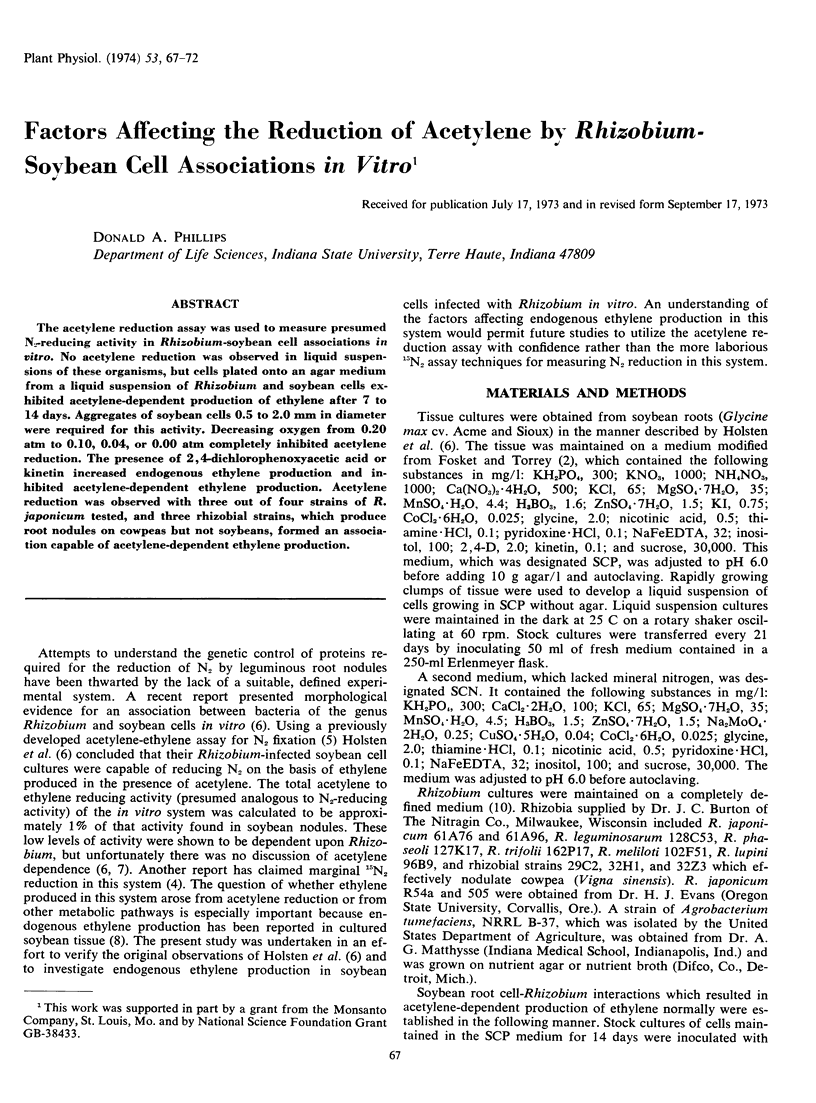
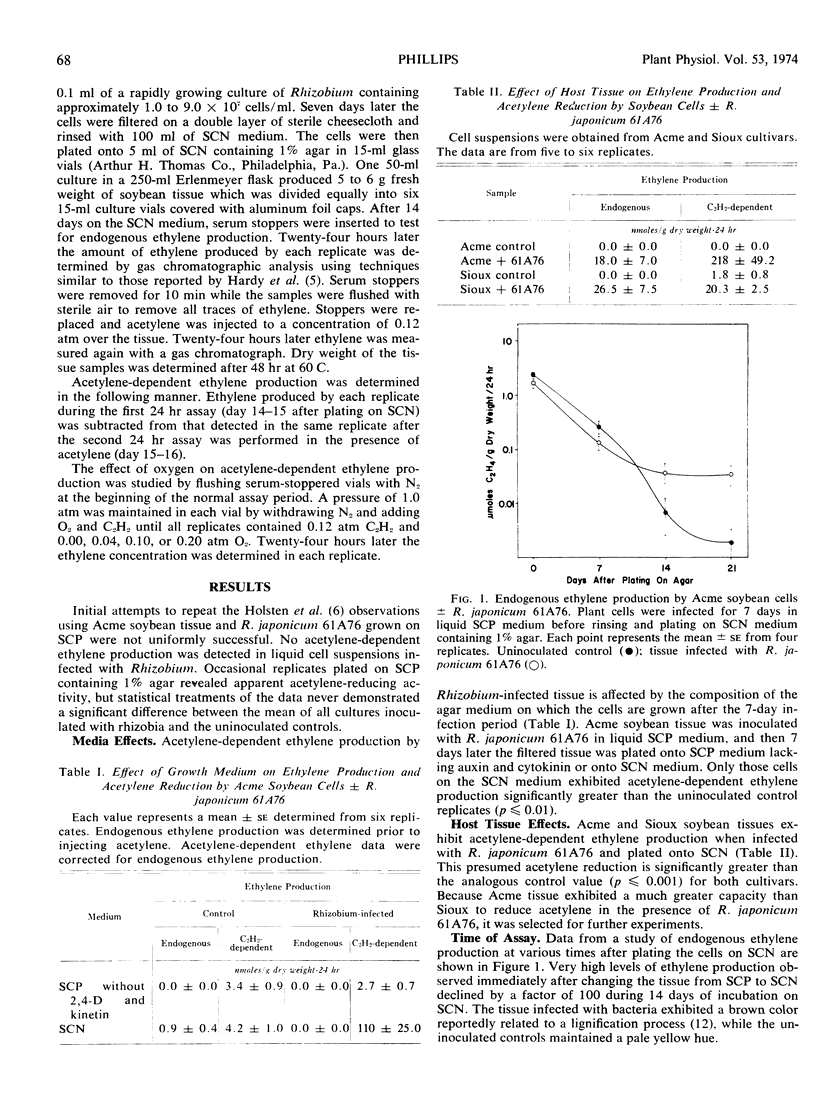
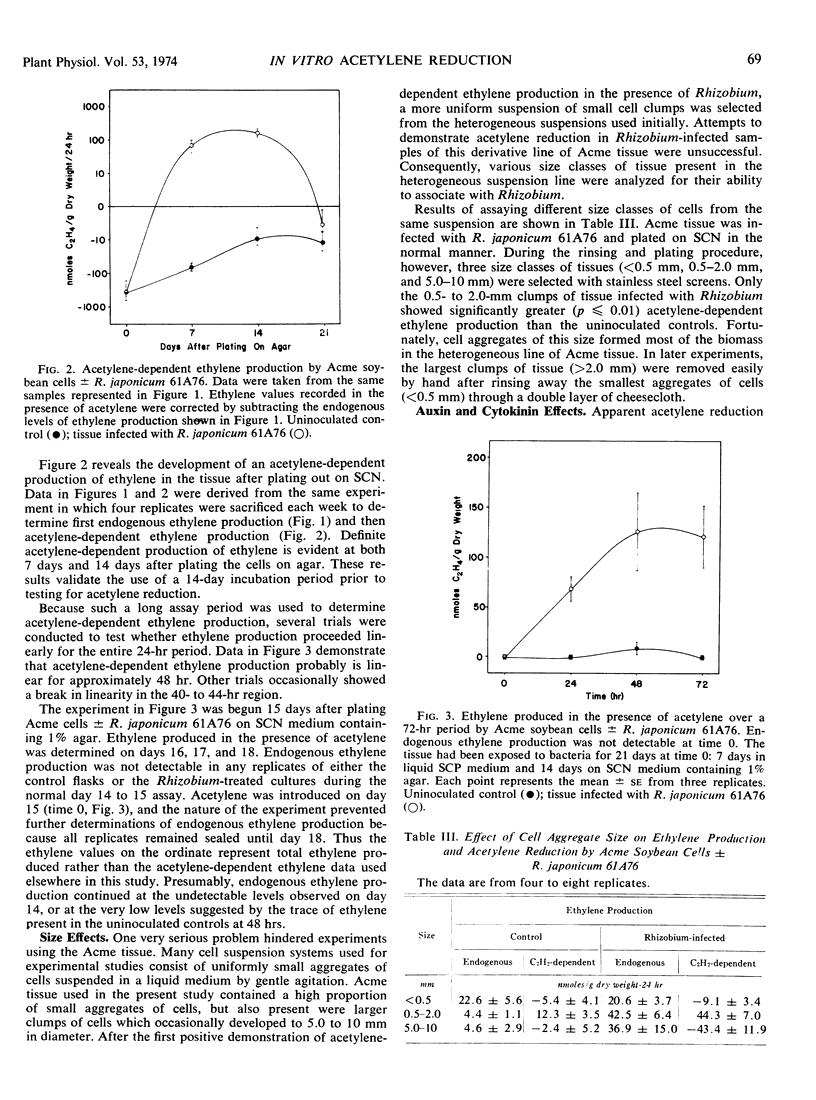
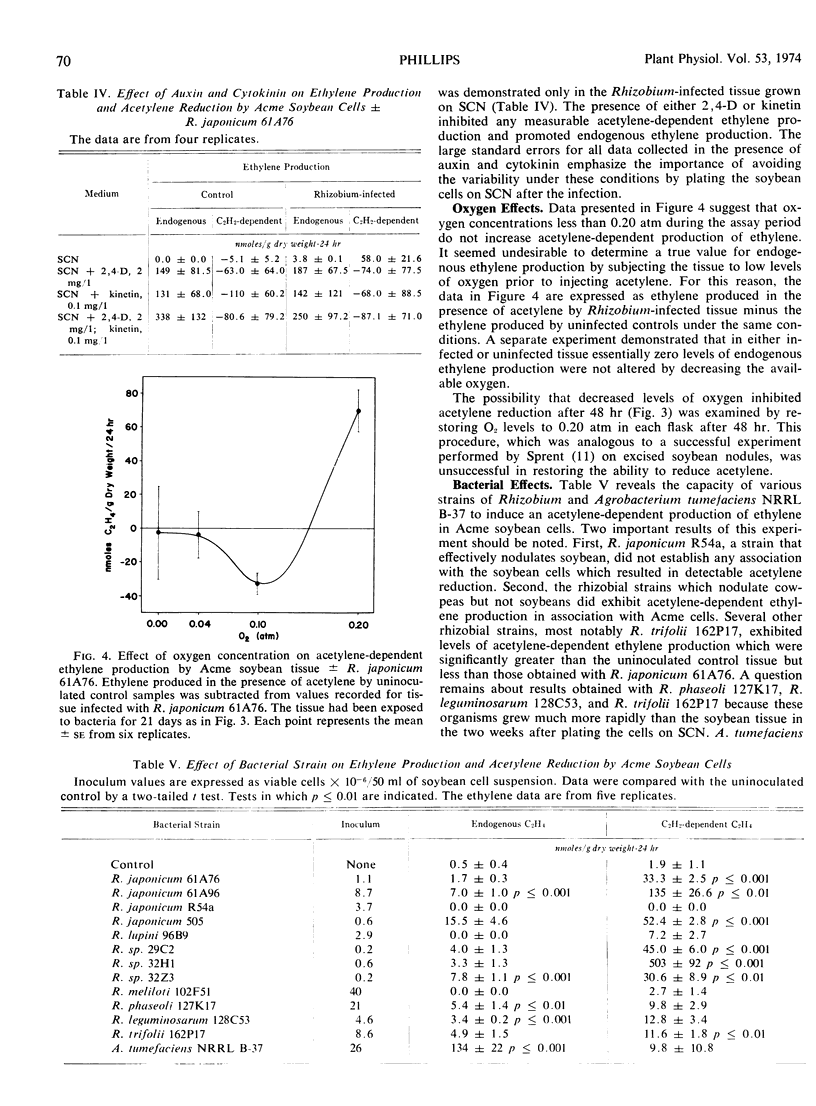
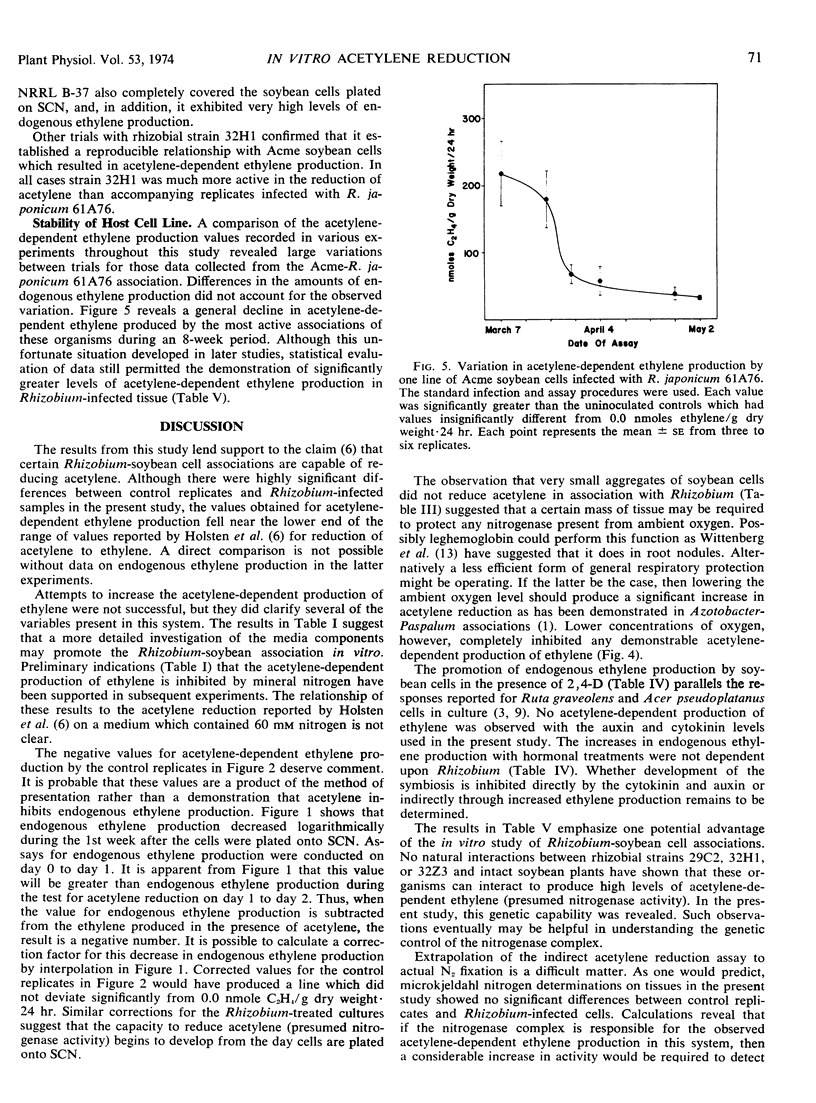
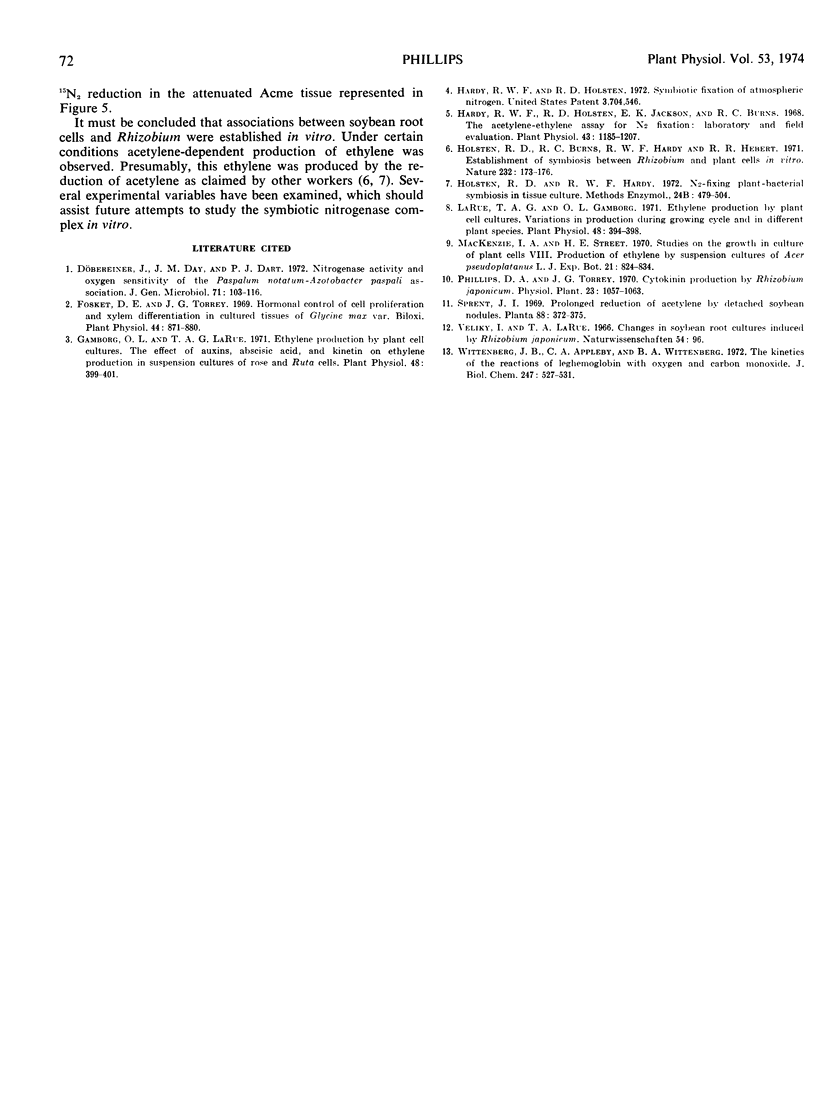
Selected References
These references are in PubMed. This may not be the complete list of references from this article.
- Fosket D. E., Torrey J. G. Hormonal control of cell proliferation and xylem differentiation in cultured tissues of Glycine max var. Biloxi. Plant Physiol. 1969 Jun;44(6):871–880. doi: 10.1104/pp.44.6.871. [DOI] [PMC free article] [PubMed] [Google Scholar]
- Gamborg O. L., Larue T. A. Ethylene production by plant cell cultures: the effect of auxins, abscisic Acid, and kinetin on ethylene production in suspension cultures of rose and ruta cells. Plant Physiol. 1971 Oct;48(4):399–401. doi: 10.1104/pp.48.4.399. [DOI] [PMC free article] [PubMed] [Google Scholar]
- Hardy R. W., Holsten R. D., Jackson E. K., Burns R. C. The acetylene-ethylene assay for n(2) fixation: laboratory and field evaluation. Plant Physiol. 1968 Aug;43(8):1185–1207. doi: 10.1104/pp.43.8.1185. [DOI] [PMC free article] [PubMed] [Google Scholar]
- Holsten R. D., Burns R. C., Hardy R. W., Hebert R. R. Establishment of symbiosis between Rhizobium and plant cells in vitro. Nature. 1971 Jul 16;232(5307):173–176. doi: 10.1038/232173a0. [DOI] [PubMed] [Google Scholar]
- Holsten R. D., Hardy R. W. N2-fixing plant-bacterial symbiosis in tissue culture. Methods Enzymol. 1972;24:497–504. doi: 10.1016/0076-6879(72)24095-2. [DOI] [PubMed] [Google Scholar]
- Larue T. A., Gamborg O. L. Ethylene Production by Plant Cell Cultures: Variations in Production during Growing Cycle and in Different Plant Species. Plant Physiol. 1971 Oct;48(4):394–398. doi: 10.1104/pp.48.4.394. [DOI] [PMC free article] [PubMed] [Google Scholar]
- Wittenberg J. B., Appleby C. A., Wittenberg B. A. The kinetics of the reactions of leghemoglobin with oxygen and carbon monoxide. J Biol Chem. 1972 Jan 25;247(2):527–531. [PubMed] [Google Scholar]


